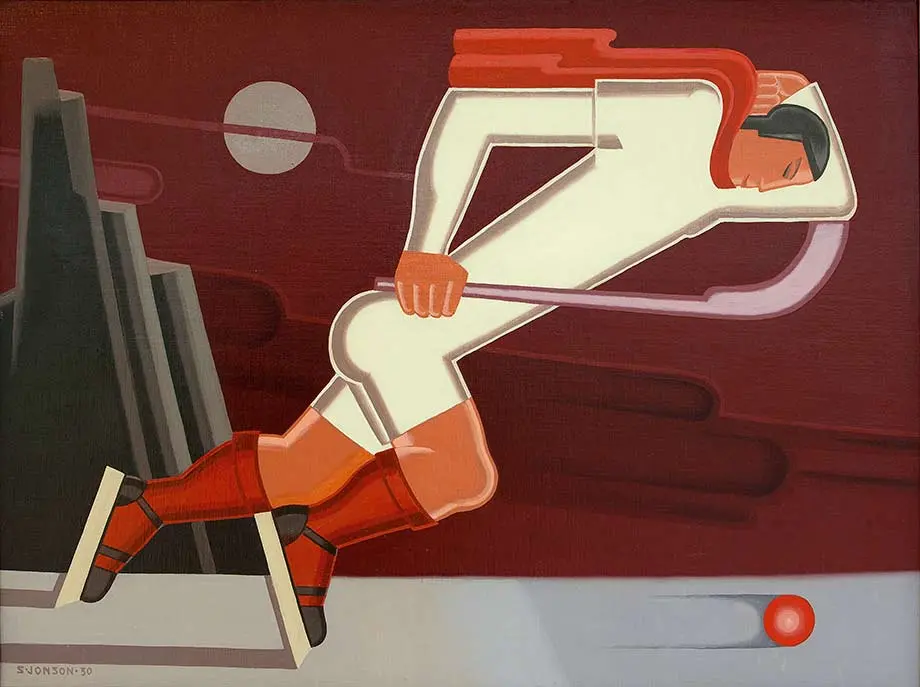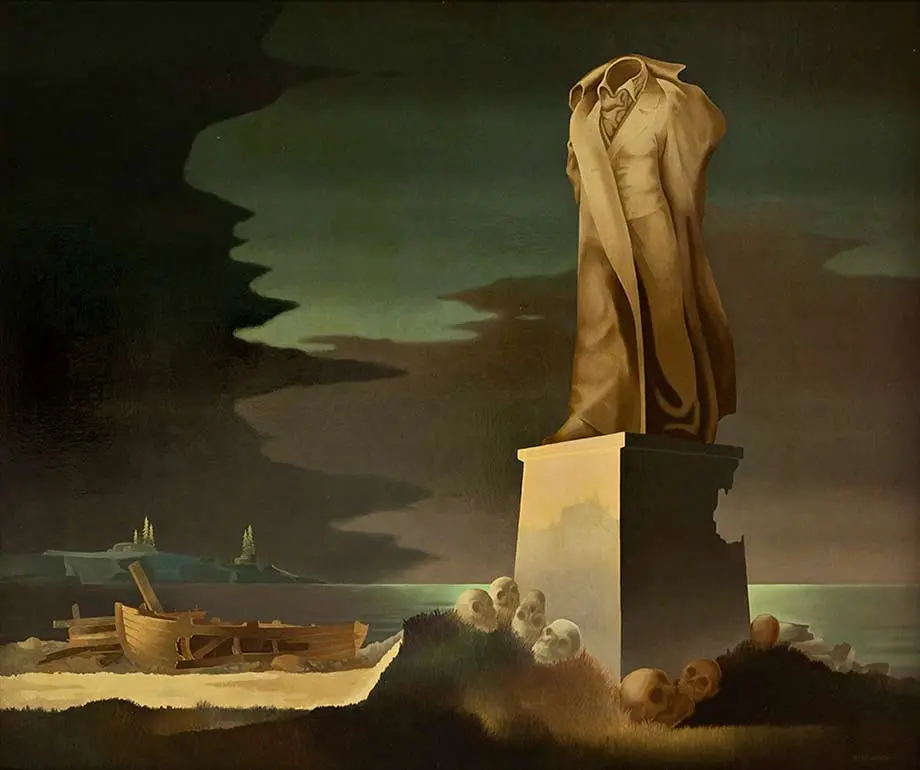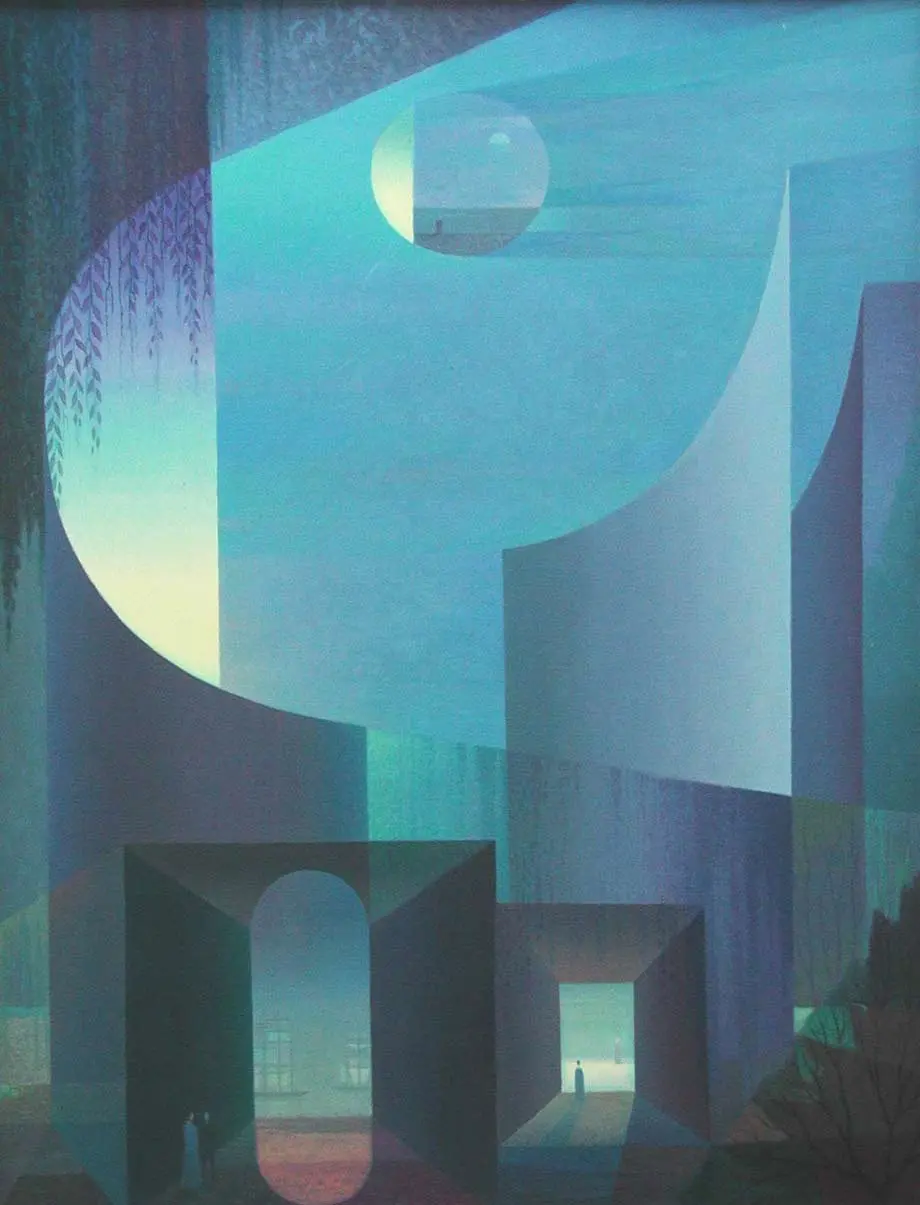Sven Jonson
Sven Jonson (1902–1981) was one of six artists in the Halmstad Group.
Sven Jonson was born in 1902 to a fisherman´s family in Söndrum outside Halmstad. He becomes a painters apprentice and aims at a craftsman´s career as a professional painter; however he becomes increasingly interested in art. In 1922 he takes the step into artistic expression and the following year establishes the group De Unga (The Young) with Esaias Thorén. Axel Olson becomes the group´s teacher. The group exhibits in Halmstad in 1924.
Studies in Paris and Cologne
In 1925 Jonson studies in Stockholm at Carl Wilhelmssons painting school.In the autumn of 1926 Jonson and Thorén travel to Paris via Cologne where the monumental arches in the cathedral fascinate Jonson. In Paris they draw for Otte Sköld but can not manage to make a living without benefactors and have to leave in the spring of 1927. Back in Halmstad they open Modern Reklam (Modern Advertising), a combined painting school and atelier which becomes a gathering place for the town´s artists, musicians and intellectuals. In 1928 Jonson meets the artist Gösta Adrian-Nilsson. GAN´s paintings influence Jonson to a series of sports motifs, among others Bandyspelaren (The Bandy Player) 1930.
The Halmstad Group
In 1929, Jonson forms the Halmstad Group together with Axel and Erik Olson, Waldemar Lorentzon, Esaias Thorén, and Stellan Mörner. Towards the end of the 20´s, Jonson paints in a post-cubist style oriented towards purism. In 1930 he paints a number of compositions in concretist style, for example Plangeometrisk komposition (Planar-Geometric Composition) 1930. That year he participates in Otto G. Carlslund´s scandalous exhibition Art Concret in Stockholm.

Sven Jonson, "Bandyspelaren", 1930
Surrealism
In 1934 the Halmstad Group members have developed towards surrealism. In 1935 the group participates in the international exhibition Kubisme=Surrealisme in Copenhagen. Jonson´s surrealism is characterised by barren landscapes in light, yellow and brown shades, often with small human figures to exemplify mans smallness in the universe. Architectural elements and vast distances to the horizon with mile long shadows, arches and arcades are all typical elements of Jonson´s work of this period. In 1937, he participates in a large international surrealist show in London. During the second half of the 30´s Jonson mirrors the fear of a new World War in a series of visions of a destroyed world, for example Ecce Homo 1937.

Sven Jonson, "Ecce Homo", 1937
The Söndrum Colony
During the 40´s Jonson takes part in Söndrumskolonin (the Söndrum Colony) a grouping of artists in Halmstad´s coastal area- along with Sven X:et Erixson, Felix Hatz and members of the Halmstad Group. The beginning of the 1960´s finds Jonson painting labyrinthine cathedrals where, in part, he refers back to the cubism of the 20´s. During the latter part of the 60´s and the 1970´s, the blue shades of sea and sky return to dominate his work; also reflecting his lifelong interest in space, planets, and celestial constellations. Sven Jonson passes away in 1981.

Sven Jonson, "Preludium II", 1972
